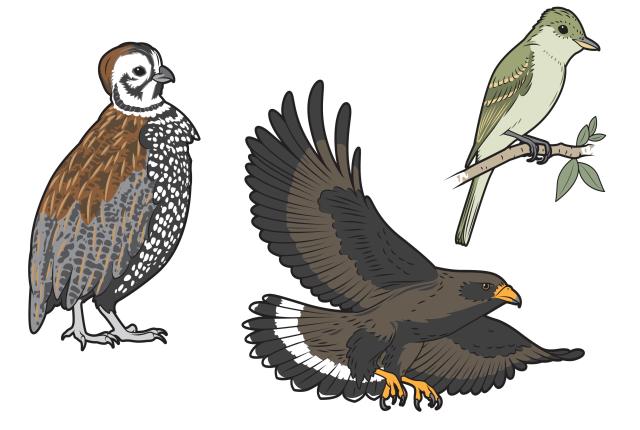LOCATED AT THE NORTHERNMOST end of some birds’ range and the southernmost of others, the Gila Wilderness climbs from cactus-filled desert to steep, pine-covered peaks. Those features, combined with the dense, deciduous vegetation along the Gila River’s forks, make for a robust habitat for bird-watching. Approximately 170 birds breed there, another 115 or so make appearances throughout the year, and a few dozen more visit intermittently. “That’s pretty impressive,” says Jerry Monzingo, a biologist with the Gila National Forest. The riparian corridors are particularly rich: “You can check a lot of birds off your list in a few hours.”
The Gila hosts one of the largest known populations of the endangered southwestern willow flycatcher. The small grayish-brown bird, about five inches from bill to tail tip, with a distinctive fitz-bew song, can be found swooping after insects along river corridors, particularly in the Cliff-Gila Valley floodplain.
The common black hawk cruises overhead along the Gila River forks, often paired up or showing a fondness for perching in cottonwood trees. Look for a charcoal-
colored bird with a broad wingspan and white band across its tail. Other raptors to keep an eye out for in the Gila Wilderness include bald eagles, peregrine falcons, and Mexican spotted owls, one of about seven local owl species.
In the mountains, watch for the Montezuma quail, a beautiful little bird with harlequin-like black-and-white markings on its face and white spots on a brown chest. Weather dictates how many clutches they raise in a season, but some years they’re quite common to see from the piñon-juniper woodlands into the ponderosa pines. “Most of the time, they scare you, because you basically step on them before they move,” Monzingo says. “Then they come up right in your face.”
Read more: Pinyon jay populations have been declining—everywhere but the Gila.


